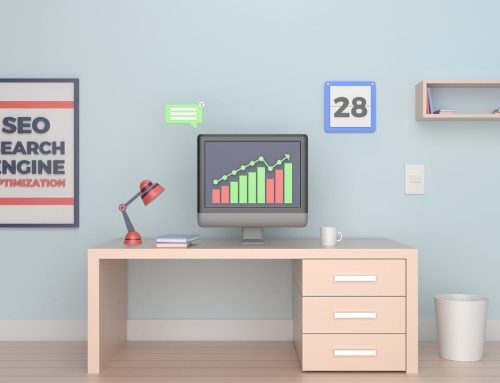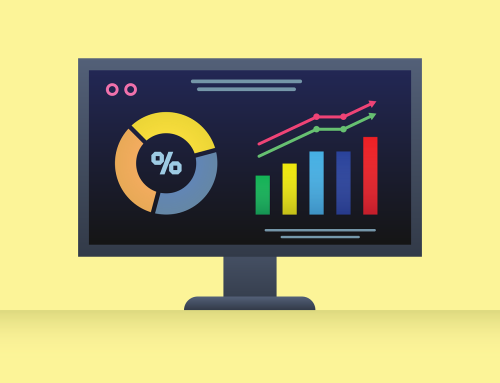Big news from the Google-verse.
On Jan. 10, Google updated its mobile search algorithm to make the visibility of Smartphone content a prominent ranking signal. As it stands now, the update is going by the unofficial name “Intrusive Interstitial Update” (I.I. Update).
What’s this mean for mobile marketers, you ask?
It means that any website that uses intrusive pop-up boxes will likely find itself affected by Google penalties in the very near future.
Read on to learn more about the Intrusive Interstitial Update, and how it might affect your site.
The Reasoning Behind the Intrusive Interstitial Update
Google first announced this change on Aug. 23, 2016. In its words, “Pages that show intrusive interstitials provide a poorer experience to users than other pages where content is immediately accessible. This can be problematic on mobile devices where screens are often smaller. To improve the mobile search experience, after January 10, 2017, pages where content is not easily accessible to a user on the transition from the mobile search results may not rank as highly.”
As is true with most Google updates, this one aims to help Google users find the content they want without annoying interruptions they don’t. This is especially important since 56 percent of the traffic major sites enjoy comes from mobile platforms.
The purpose of removing interstitials and other intrusive pop-up advertising is to make the mobile search results more user-focused. It’s also meant to make content easier for people to navigate on Smartphones and tablets.
What is an Intrusive Interstitial?
If you think the term “Intrusive Interstitial” sounds like some sort of odd insect, you’re not wrong. The best way to avoid penalties, though, is to understand exactly what Google is talking about in the I.I. update.
Generally, an intrusive interstitial is anything that does the following:
- Blocks a page;
- Makes content unreadable;
- Pops up without interaction;
- Isn’t responsive (meaning it’s difficult or impossible to close on a mobile platform);
- Bothers people;
- Annoys people.
According to a 2016 Search Engine Journal piece on the topic, “Google will be targeting pages with interstitials that are displayed either when the user immediately lands on the page, or those which pop up while a user is scrolling through the page…Google will also target pages where the above-the-fold content is designed to look like an interstitial…”
While Google isn’t planning to punish all popups (more on this below), anything that has a negative impact on the user experience will be downranked.
5 Top Things You Need to Know About the Intrusive Interstitial Update
Google’s mobile popup change went live on Jan. 10, and marketers around the Web have been adjusting to the alteration since then. As of the 10th, Google has been devaluing pages that display pop-ups to mobile users who find pages via Google’s search results. Here’s a breakdown of the biggest changes and what you need to know:
1. This change only applies to mobile traffic
If you use popups or intercostal on your site, recent updates from The SEM Post report that Google’s change won’t affect your desktop traffic. This is true for everyone unless you have a desktop-only site. In today’s world, desktop-only sites become mobile sites when they’re visited by a mobile user, so you may be penalized for displaying pop-ups anyway.
2. The change only affects Google-born clicks
It’s fine to continue using popups if you’re only displaying them to the second page view after a Google referral. If people arrive on your site from traffic sources external of Google, it’s fine to display popups. Because Google evaluates pages from the searcher’s point of view when they first land on the page, showing popups in second page view position won’t hurt your rankings.
3. Age-verifications and other legally required intercostal won’t be affected
If you have a site where you’re legally required to have users verify their age in a pop-up or interstitial before viewing your page’s content, you won’t have to worry about Google’s new change. Because the law requires these popups, they won’t be affected by the update.
4. Exit interstitials are still okay
If you’re using exit interstitials (the type that appear when a user hovers over the back button or goes to close a page), you won’t notice Google penalties – even if your traffic came through Google’s search referral. To avoid penalties, however, it’s critical that you’re using true, rather than delayed, exit interstitials.
5. Delayed popups don’t get a pass
Some popups are delayed, meaning they only appear once a user has been on the page for 10 or 15 seconds. While these are typically regarded as less intrusive, they’re not immune to Google’s impending penalties and will be downranked accordingly.
3 Steps to Protect Your Site
If you do have popups on your site, don’t fear. There are steps you can take to avoid devaluation. We first heard this news at SEJ Summit, so we’ve been preparing for months. Here are our top tips to you:
1. Use in-text hyperlinks, instead
If your call-to-action has previously come in the form of a popup, Search Engine Land recommends using in-text hyperlinks as an alternative. Instead of using a pop-up to drive your lead generation, use links that point to landing pages.
2. Use well-blended prompts
Many people use interstitials and pop-ups as calls-to-action. The trouble is that they’re annoying and invasive for the reader. Instead of taking this route, use call-to-action prompts to help your readers take the next step. These simple content forms, which typically include a header, body text, and a CTA, can be plugged directly into the bottom of your blog posts. They blend better with your site and aren’t disruptive to your readers.
3. Use responsible pop-ups
Keep in mind that Google’s new change doesn’t affect all popups, and several types will be immune from devaluation. If you use them intelligently, that is.
These include login popups on sites that feature gated or private content and banners that are “easily dismissible” and small. Google itself reports that any banners that take up only a “reasonable amount of space” will be unaffected by the update.
If you’re in doubt about whether our popup is acceptable or not, ask yourself if it disrupts the user experience. If it does, the answer is probably that it should go. You can also check out Google’s graphic examples of unacceptable vs. acceptable pop-ups below:
The Mobile Climate of the Future & Why Express Writers Has Never Used Modals
We’ve never done a “modal” because, hey, they’re annoying! As such, we’re not surprised that Google is working to improve mobile user experience by removing them. Fortunately, there are dozens of things you can do to improve your existing content and ensure that your site isn’t devalued because of these obnoxious little popups.
In addition to using prompts and in-text hyperlinks, arrange your content strategy so that it naturally guides people through your sales funnel, rather than forcing them through it with pop-ups they must click-through to remove.
While adjusting to this change will be difficult for some marketers, it’s ultimately a positive adjustment that will make the Web a nicer place for mobile users.







